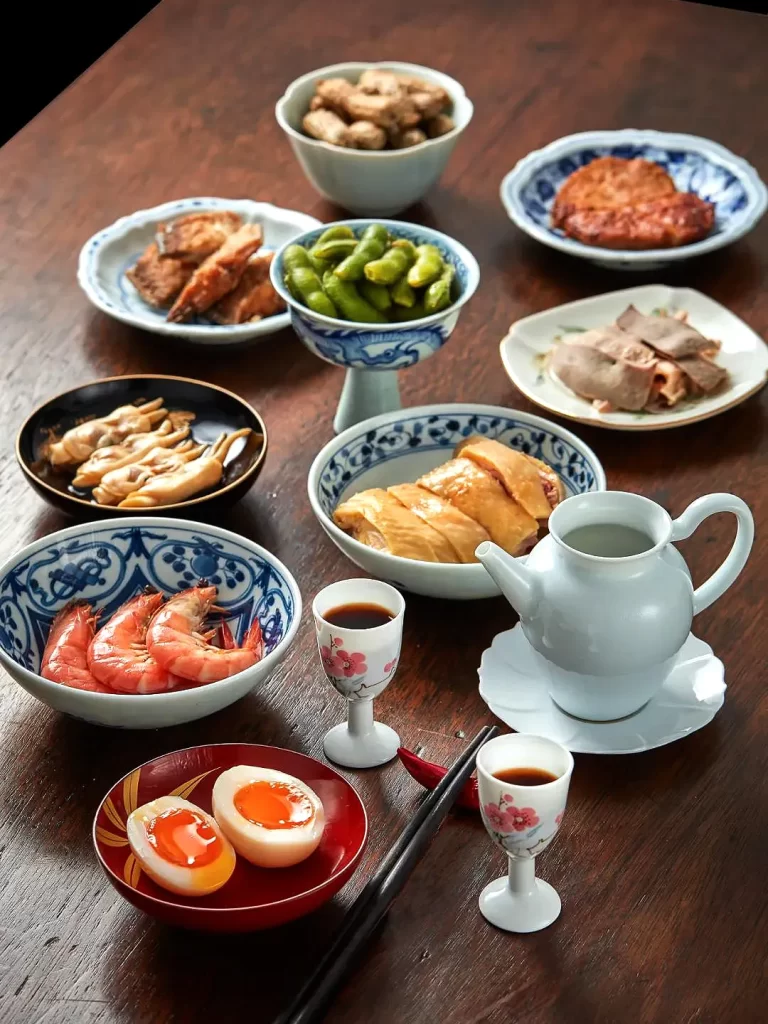A brief introduction to Shanghai Cuisine
Shanghai cuisine has distinctive regional characteristics that reflect the culinary culture of the Jiangnan region, while also incorporating the influence of foreign cuisine to form a unique flavor. The following are the main characteristics of Shanghai cuisine:

1. Focus on freshness and emphasize the original taste
- Shanghai cuisine emphasizes the freshness of ingredients, especially aquatic products such as river, lake and seafood. The dishes often highlight the original flavor of the ingredients themselves.
- The cooking process seeks to achieve a “fresh, tender, smooth and glutinous” texture, and steaming, simmering and braising are widely used techniques.
2. Sweet taste, salty with a touch of sweetness
- Sweetness is an important characteristic of Shanghai cuisine, and many dishes have a salty-sweet or sweet base. For example, braised pork and sweet and sour pork ribs are classic representatives.
- Sugar and soy sauce are often used to enhance the flavour, creating a rich but not overly sweet and salty taste.
3. Emphasis on color and texture
- Shanghai cuisine places great emphasis on the color and texture of dishes. For example, braised dishes usually have an attractive dark red color and are served with a glossy sauce.
- In terms of texture, the emphasis is on being tender (e.g. steamed fish), soft (e.g. glutinous rice balls in fermented rice wine) and fresh (e.g. poached chicken).
4. A wealth of snacks, with a wide variety
- Shanghai has a long history of snacks, with a wide variety of both local specialties and those influenced by Jiangsu and Zhejiang.
- Classic snacks include
- Shengjian Mantou: crispy on the outside and juicy on the inside.
- Xiaolongbao: thin skin, fresh filling and rich broth.
- You Tiao Soy Milk: a standard breakfast dish.
- Scallion Noodles: rich in aroma and easy to make.
5. A fusion of Chinese and Western influences, with obvious foreign influences
- As one of the earliest cities to open up in modern China, Shanghai cuisine has absorbed many Western elements. For example
- Western elements such as borscht and French bread (e.g. butterfly bread) have been incorporated into the daily diet.
- “Shanghai-style Western food” developed in the last century, such as “Shanghai-style steak”, uses local seasonings and methods to improve Western food.
6. Strong homely flavour, suitable for everyday
- Shanghai cuisine is suitable for home cooking, and many dishes are simple and easy to prepare, such as braised eggplant and yellow croaker fish soup with preserved vegetables.
7. Seasonal, ingredients should be in season
- Shanghai cuisine emphasizes the seasonal nature of ingredients. For example:
- In spring, eat green dumplings, which are fragrant and sweet.
- In summer, prefer cold dishes, such as cold shredded vegetables.
- In autumn, enjoy the deliciousness of hairy crabs.
- In winter, warm up with hot soups, such as pickled tofu.
Representative dishes
- Shanghai local cuisine: braised pork, fried shrimp, and duck with eight treasures.
- Water town specialties: steamed sea bass, and pig's intestines with chives.
- Classic desserts: lotus root with osmanthus, and glutinous rice balls with fermented rice wine.
Shanghai cuisine is known for its sophistication, diversity and inclusiveness. It not only reflects the soft elegance of Jiangnan cuisine, but also incorporates the innovation and modernity of an open city.
